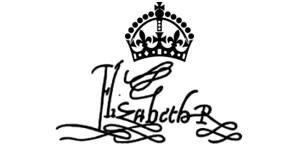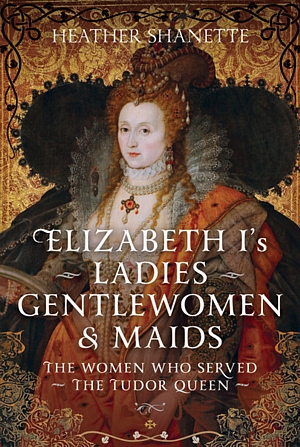
Elizabethan Women
Women in Tudor History
Although a woman ruled over Elizabethan England, the roles of women in
society were very limited. The Elizabethans had very clear expectations of men and women, and in general men were
expected to be breadwinners and women to be housewives and mothers. On average, a woman gave birth to a child
every two years, but as a lot of babies and children died from sickness, families were not always large.
Childbearing was considered a great honour for women, as children were seen as blessings from God, and Tudor women took
great pride in being mothers.
Elizabethan society was patriarchal, meaning men were in control. Women were considered "the weaker sex", not just
physically but intellectually and emotionally too. It was widely believed that women needed someone
to look after them. If they were married, their husband was expected to look after them. If they were single, then
their father, brother or another male relative was expected to take care of them.
Women were not allowed to enter the professions (i.e law, medicine, politics) but they could work as governesses in private households.
Women also dominated childcare. Poor women suckled their own children but rich women employed a wet-nurse to breastfeed their babies. They also
employed other nurses to care for their children. Childbirth itself was generally a female-only event. Babies were delivered by midwives, doctors only
attending if their were complications, and men were not allowed to be present. Women also worked as laundresses, cooks, maids and
cleaners in 'great houses'. Other jobs for women included working in shops, taverns and inns; on farms as milkmaids or labourers; and
in clothing production as seamstresses, starchers, spinners and knitters.
Then, like now, women had literary and acting talents, but it was impossible for women to make a living from them.
Women were allowed to write works of literature, providing the subject was suitable for women
(mainly translations or religious works), but they were not allowed to act on the public stage or to write for the public stage. Acting was considered dishonourable for women and
women did not appear on the stage in England until the seventeenth century. In Shakespeare's plays the roles of women were usually
played by young boys. It was also very hard for women to make a living as musicians and painters. However, there was at least one
female painter at the court of Henry VIII, Levina Teerlinc, who later went on to serve Queen Mary and Queen Elizabeth.
The type of education a woman received depended on her social status. Poor women were generally uneducated and
illiterate whereas upper class women were educated well. Indeed, there were some very 'learned' women in the late sixteenth century.
The Queen was one and others include Mildred Cooke, Lady Burghley (wife of William Cecil);
her sister, Anne Cooke, Lady Bacon; Mary Dudley, Lady Sidney; and her daughter,
Mary Sidney, Countess of Pembroke. Women were not allowed to go to school or to university, but they could be
educated at home by private tutors or governesses. Elizabeth was tutored by her governess, Kateryn Astley, and then by
the famous scholars William Grindal and Roger Ascham.
Women, regardless of social position, were not allowed to vote (only men of a certain social position were allowed to
vote) and they could not, in general, inherit their father's titles. Titles generally passed down the male line from father to son or brother to brother.
The only exception was, of course, the crown. The crown could pass to a daughter, and that daughter would be invested
with all the power and majesty of any king. This allowed Mary, and then Elizabeth, to reign. In some cases women could not inherit estates, but
women could be heiresses to property, and some women, especially if they were the only child of an aristocrat, could be
very affluent heiresses indeed. Robert Dudley's first wife, Amy Robsart, was Sir John Robsart's only child, and consequently
inherited two estates in Norfolk.
The laws of inheritance meant that fathers were very keen on having a son to succeed them. However, that does not
mean that daughters were unloved and unwanted. The attitude of Henry VIII to his daughters was unusual.
When his grandfather, King Edward IV, was in the same predicament, having no son to succeed him, he was happy to settle
the crown on his eldest daughter,
Elizabeth of York. Henry VIII, however, was obsessed with having a male heir and was willing to kill his wives in order to
get one. Most men did not discard their wives because there was no son, and most were very protective of their daughters, seeing
them as precious gifts from God. Of all the children SIr Thomas More had, his favourite was his daughter, Margaret, and
William Cecil's favourite child was his daughter, Anne. Queen Elizabeth would write letters of condolence on the death of daughters as well as on the death of sons.

Elizabethan Family
Unless a woman lived alone, or with other women, then the head of her household was always male. For a wife, the
head was her husband. He was also the head of their marriage. As the head a husband had the legal right to
chastise his wife. However, it is important to understand what this "headship" meant. It did not mean, as is often supposed,
that a husband could be a petty tyrant. He was expected to love his wife, take care of her, make sure she had everything
she needed, be a good provider, and a kind father to any children they had. If a husband felt the need to chastise his
wife, he was not allowed to be cruel or inflict bodily harm. If he did, then he could be prosecuted or prevented from
living with her. There was no divorce (as we know it) in Elizabethan times. For most people marriage lasted as long as
both partners lived. If a couple did want to separate, they generally had to seek an annulment.
An annulment, rather than a divorce, meant that their marriage had never been lawful. Despite having been married
six times, Henry VIII only regarded Jane Seymour and Kateryn Parr as his legal wives.
It is probably fair to say that, despite the limitations, women had more freedom in the late Tudor period than they had
had before and would have again for some time. The Renaissance brought with it a new way of thinking. It was thought
that men and women could do anything, and be anything, that they wanted, that their capacity for knowledge was limitless.
A woman being on the throne also elevated the status of women and encouraged noblemen to educate their daughters as they did not want them looking dim in the presence of their
very intelligent and highly educated queen. There were a number of roles for women at court, from Maids of Honour to
Ladies of the Bedchamber, and my book
Elizabeth I's Ladies, Gentlewomen and Maids tells you all about them.
Ironically, given there was an unmarried woman on the throne, those women most likely to suffer in this period were
those who did not wish to marry. Before the Reformation, celibacy was held in some esteem, and many women
became nuns, but after Henry VIII split with Rome and closed the monasteries and convents, celibacy was seen as a dubious asset and was
was discouraged. Women who stayed single were looked upon with suspicion, were increasingly derided as
'old maids', and were more likely to be labelled witches by their neighbours.

































